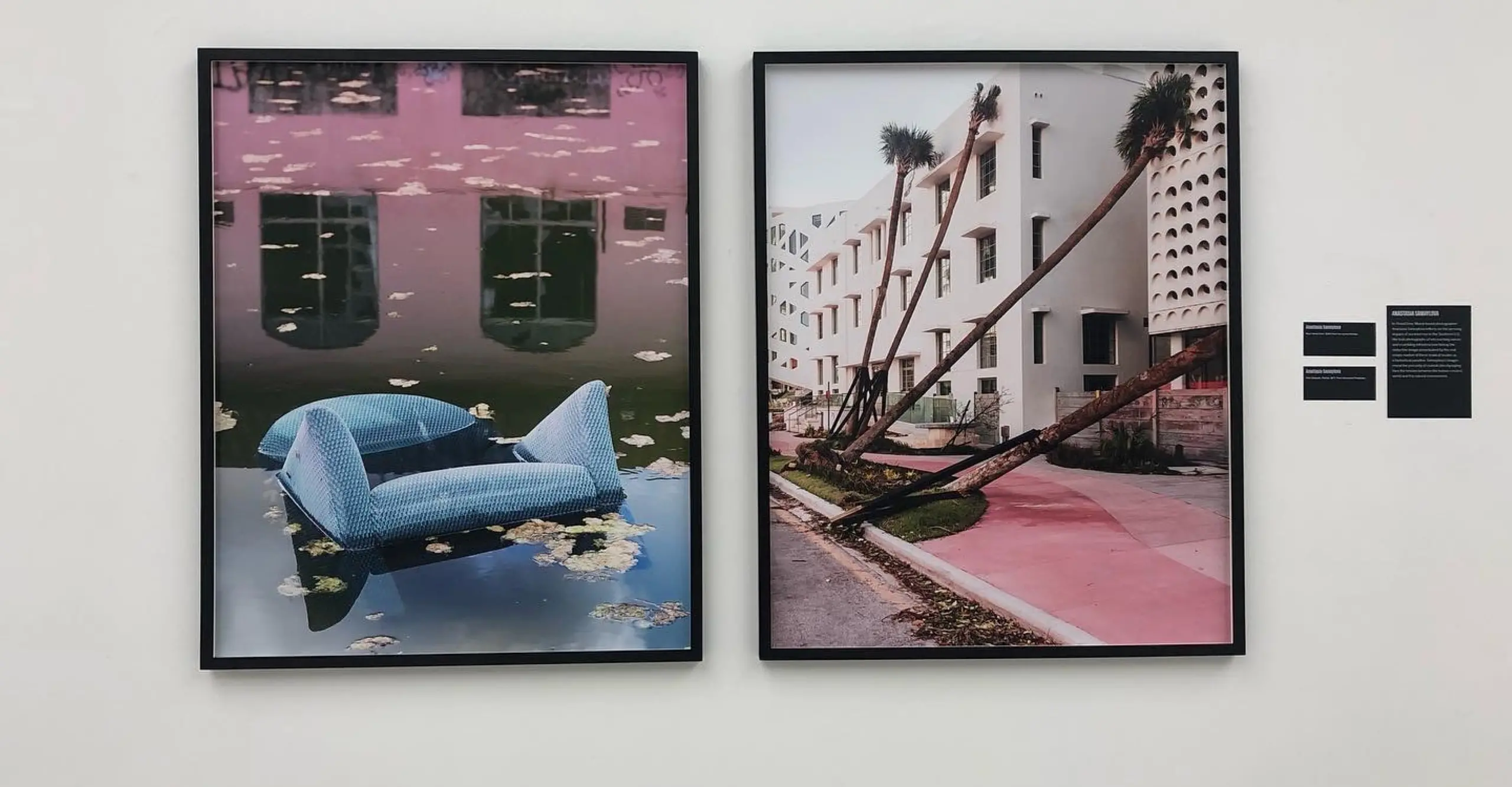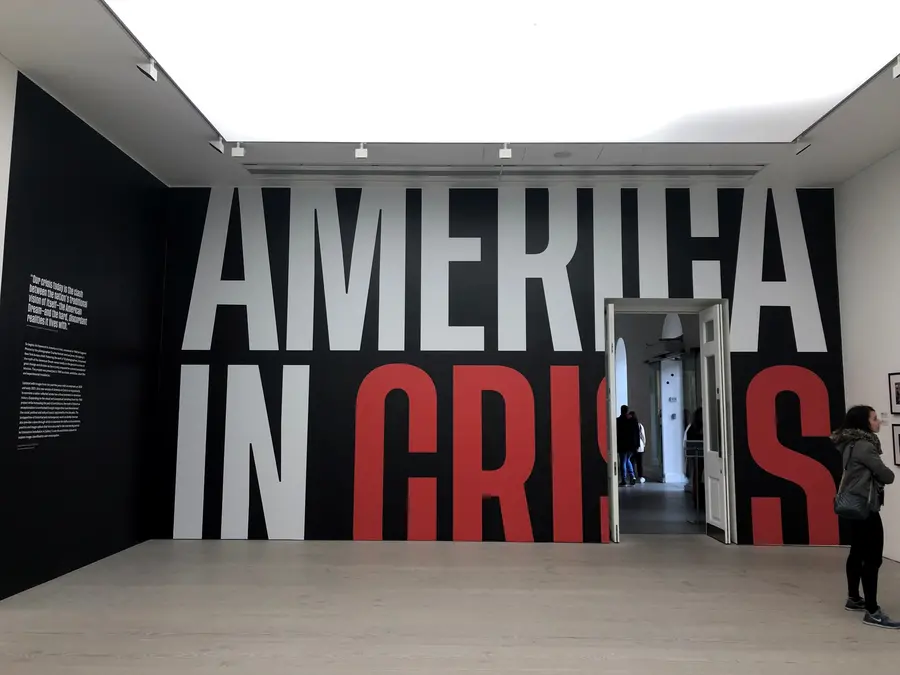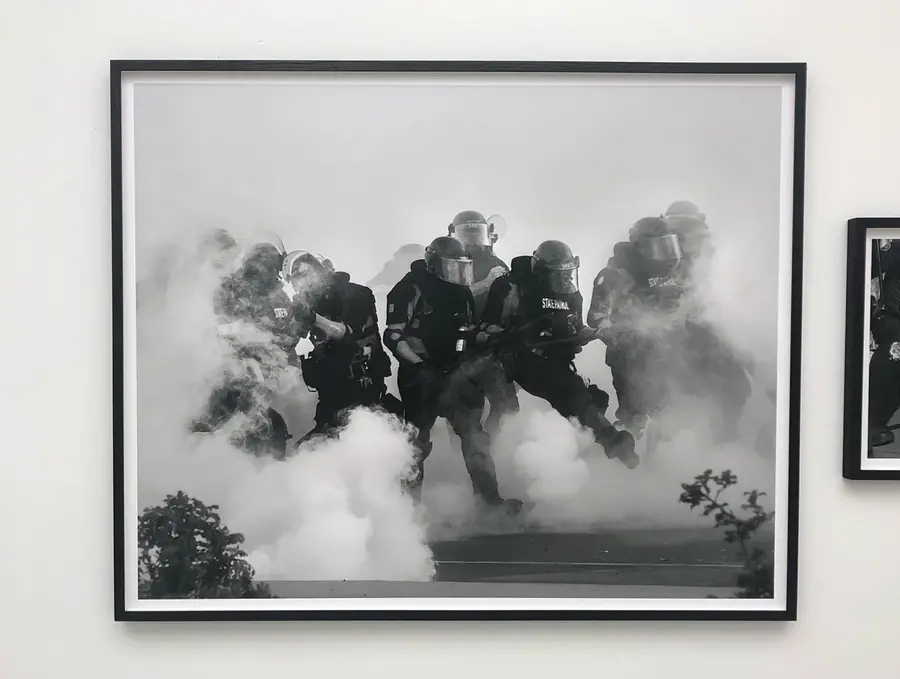Tilly Booth-Farmer reviews America in Crisis at the Saatchi Gallery
From the funeral of George Floyd to Trump’s campaign rallies, protests for justice, riots at the US Capitol, poverty, and rising sea levels, the poignant and thought-provoking America in Crisis exhibition narrated some of the social, political and cultural issues seen over the last five years.
The exhibition is an update to the 1969 display that followed a momentous presidential election and the reality of the American dream in times of division and social change. In the new exhibition, contemporary events are juxtaposed with pivotal historical moments from the ‘60s, questioning how America has changed in 50 years, whilst also highlighting the crucial moments in history we have just experienced.
Walking into the first room, I was met with a foreword for the exhibition; bold black with quotes and contextual information was spread throughout the rooms. The first photograph that I came to was Paul D’Amato’s Bungalow Family with Last Ash Tree, which presents a collection of narratives. I was first struck by the warmth of the colours and the atmosphere, the pleasant summer evening light. The red clothing of the man in the background compliments the green of the perfectly cut grass and the orange/beige tones of the row of suburban houses works well with the clear blue sky. In the foreground, a man in shadow looks watchfully into the lens. He has a cautious fixed stare as though the camera is an intrusion.
The exhibition layout had a big impact on how the photos were seen. The white walls and black frames provided a pure setting that didn't detract from the images. Some photographs were set on their own, such as the panoramic photo of Downtown, Columbus, North Dakota, by Matt Black. Other photographs were close together and bounced off each other, such as the positioning of a photograph of a crossing at a red light with a background of rugged and destroyed housing, besides a portrait of a figure in a bold red hoodie. The original America in Crisis books were spread throughout the first two rooms in glass cases.
It was clear that the exhibition was carefully curated: not perfect chronological order, but arranged to provoke thought and feeling. Sheila Pree Bright’s captivating black and white photographs of Black Lives Matter protests were juxtaposed by Bruce Davidson’s photographs of the Selma March in 1965. It was as though photographs from recent years could have been taken in the ‘60s, in turn questioning the extent of change in racial justice. The images presented were powerful, and there are several that stick out; chilling images of the family of George Floyd at his funeral against an image of Trump’s rallies during the pandemic. The two photographs that stood out the most to me were Blue Velvet Chair, 2020, and Pink Sidewalk, Florida, 2017, by Anastasia Samoylova. An image of a blue chair floating in murky water with the reflection of a building was hung next to an image of a pink sidewalk where palm trees had toppled into the neighbouring buildings. These two images reflect upon the impact of rising sea levels in southern US states, and created a great sense of pictorial tension of the human created world and the natural environment.
After exiting the second room, I was surprised to find out there was a third. A short walk up some stairs took us to a dark room where an interactive video installation presented a modern play on the 1969 exhibition, in which curator Charles Harbutt presented the photographs on a one-armed bandit (similar to a fruit machine). This installation was made of eight horizontal screens in which the exhibition images appeared, quickly moving from one to another. This aimed to explore how algorithmic and data-driven media publishing feeds into individually tailored content which reinforces existing bias. In the center of the room was a foot pedal, and when I pressed my foot on it, the screens went blank and a new sequence of images appeared, grouped together based on their subject matter. This added a fun, interactive and surprising element to the exhibition, whilst also addressing contemporary image consumption.
America in Crisis was varied, insightful, captivating, and well-composed. The length of the exhibition was just right - two large rooms with photographs and the third room being installation. I would have liked to have known more about some of the photographs, and the type of photography used, as this was not included in the image captions. Despite this, the exhibition was well-rounded and a powerful update to the 1969 display.
Tilly Booth-Farmer


